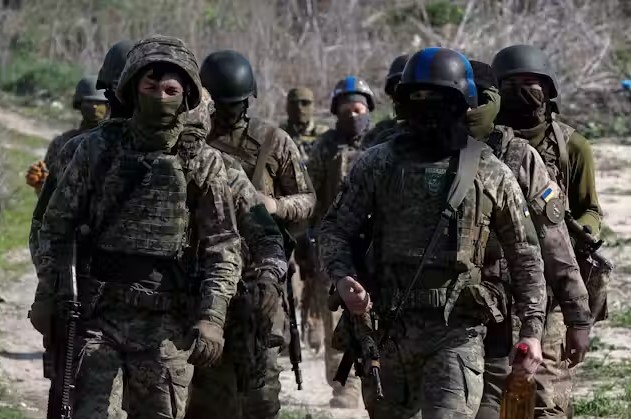Tensions in Eastern Europe have sharply risen after reports confirmed that Russia has concentrated nearly 100,000 soldiers close to the Ukrainian city of Pokrovsk. This large gathering of troops signals preparations for what could be one of the most intense offensives in the ongoing conflict.
Massive Troop Build-Up Near Pokrovsk in Eastern Ukraine
Pokrovsk is considered a vital stronghold in eastern Ukraine. The heavy movement of Russian troops and equipment towards this region has raised alarm across Ukraine and among its allies. Such a concentration of forces suggests not only a possible direct assault but also an attempt to pressure Ukrainian defenses already stretched in multiple areas.
Military analysts note that the build-up includes ground troops, armored vehicles, artillery, and logistical support units. When forces of this size assemble, they usually prepare for wide-scale operations. Ukrainian defenses continue to reinforce their positions in anticipation of this move, but the imbalance in numbers and firepower poses a serious challenge.
Russia’s war machine bleeds — daily casualties triple Ukraine’s
While Russia continues to deny aggressive intent, observers view the gathering of so many troops near the border as a significant escalation. This is especially concerning given the symbolic and strategic importance of Pokrovsk in the broader eastern front.
Ukraine’s Response and NATO Appeals
At the same time, Ukrainian forces have launched defensive operations in other regions, particularly around Sumy, where clashes with Russian units continue. Despite limited resources, Ukraine is attempting to push back and hold its ground.
The government in Kyiv has made it clear that it cannot sustain its defense alone. Requests have intensified for NATO countries to speed up the supply of advanced weapons, especially U.S.-made systems. These include air defense platforms, artillery, and long-range missiles. Ukrainian officials argue that without such assistance, holding back the Russian build-up near Pokrovsk will become increasingly difficult.
Beyond immediate weapon deliveries, calls have also been made for long-term guarantees. Ukrainian leaders are pressing for NATO-style security commitments that would assure continued support even as the conflict drags on. The argument is that without sustained backing, any pause in military aid could allow Russian forces to overwhelm key Ukrainian defenses.
The urgency of these appeals reflects not just military necessity but also the broader struggle for national survival. The large-scale troop presence near Pokrovsk adds weight to Ukraine’s demands, highlighting the imbalance between the two sides.
Security Pillars and Moscow’s Reaction to Pokrovsk Threat
Ukraine has outlined three main pillars that it believes are critical for its stability and security. The first is the constant support of its military forces through weapons, training, and intelligence. The second is the establishment of NATO-style security commitments that would go beyond short-term aid and create a structured framework of support. The third is the continuation and strengthening of sanctions against Russia, aimed at reducing its ability to finance and sustain the war effort.
Ukrainian officials also emphasize that the country’s stability depends on progress toward joining the European Union. They view EU membership as a long-term guarantee of both economic and political stability, giving Ukraine a stronger foundation against external threats.
Pipeline attack prompts Hungary to issue warning over Ukraine’s actions
Moscow firmly rejects these security plans. Russian officials warn that they will treat any attempt to deploy foreign peacekeepers or involve international forces on Ukrainian soil as an act of intervention. This position makes clear that Russia will not accept outside forces influencing the battlefield or Ukraine’s long-term security arrangements.
The combination of Russia’s troop build-up and its strong rejection of international involvement leaves the situation at a critical stage. With 100,000 soldiers stationed near Pokrovsk and Ukrainian forces struggling to maintain defensive lines, the eastern front is now one of the most dangerous flashpoints in Europe.

